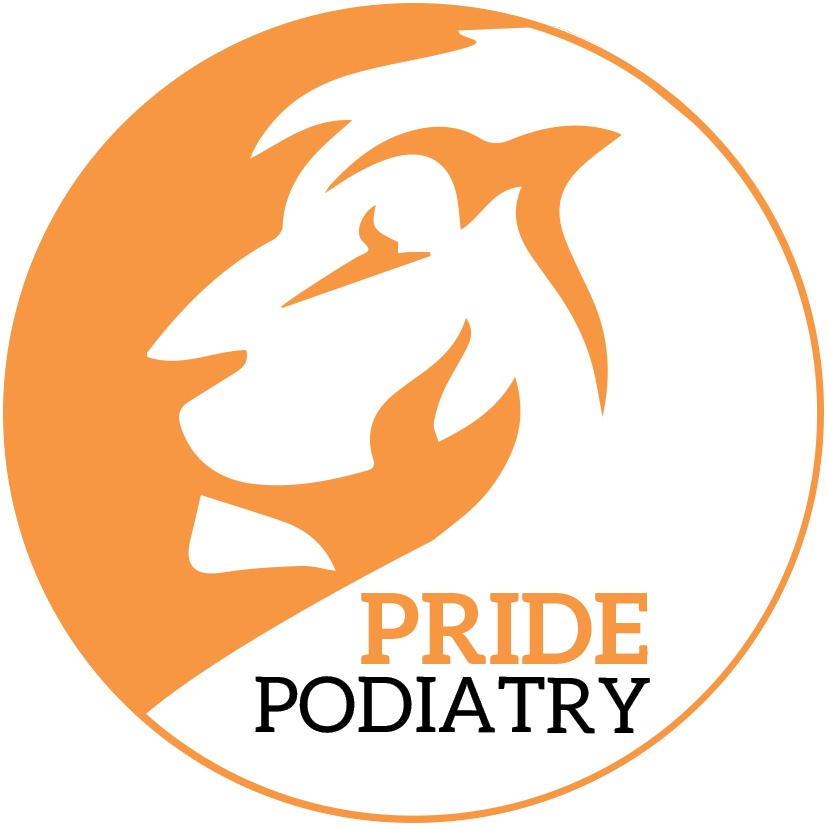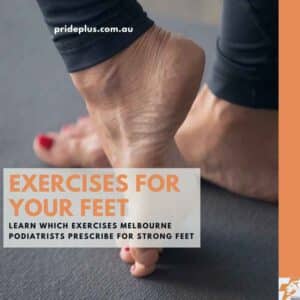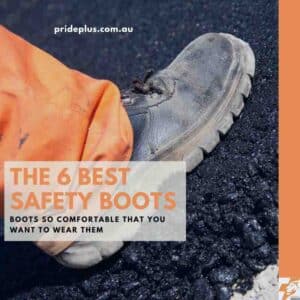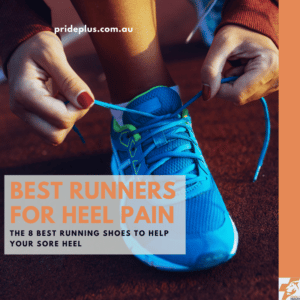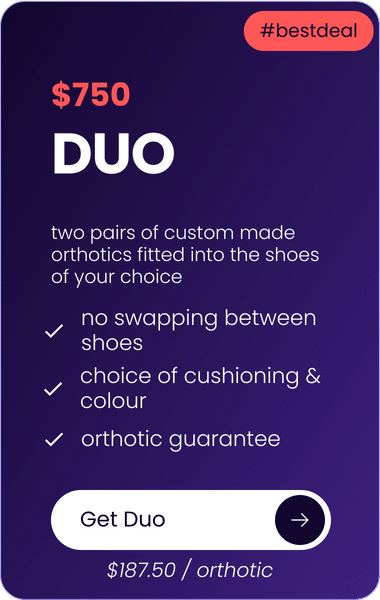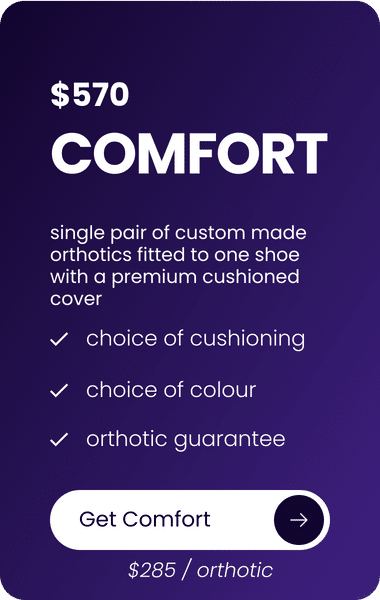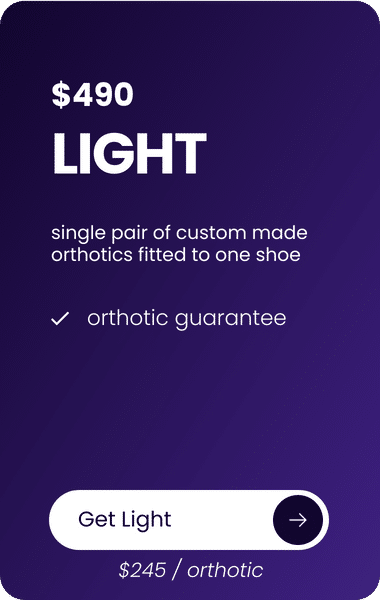Custom Made Orthotics
Are you looking for Custom Orthotics in Melbourne?
Then come to the experts at PridePlus Health in Melbourne. Our podiatrists will work with you to determine your ideal orthotic solutions and design custom orthotics especially for you.
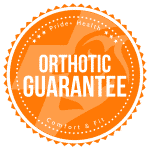
We stand by the quality
and performance of our
custom foot orthotics
with our Orthotic Guarantee.
An orthotic insole is a device which sits comfortably under the foot to change pressure and loading to reduce injury risk and maximise performance.
They can be used to treat pain-related to many different overuse conditions which develop in the feet, legs and lower back, as a result of our biomechanics and gait.
How we determine your need for custom made orthotic innersoles
Our podiatrists take into consideration:
- Joint range and quality of movement
- Injury history
- Strength and flexibility
- The axis and position of your joints
- Day-to-day or competitive activities
A 3D cast of your foot is taken and combined with your custom made orthotic prescription to fabricate comfortable, durable and effective custom orthotics.
Book an appointment at one of our Podiatry Clinics in Melbourne, Pascoe Vale or Emerald for your custom orthotics.
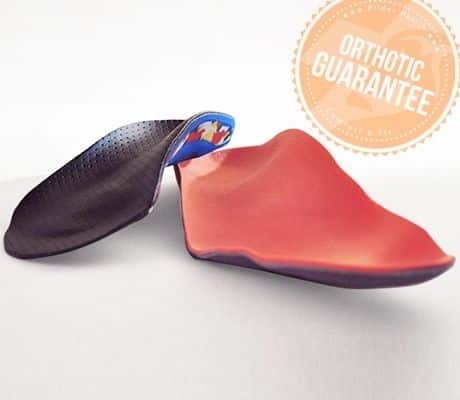

Your Guide to Custom Made Orthotics
Table of Contents
- What are Orthotic Insoles?
- Do Orthotics really help flat feet?
- What are Orthotics good for?
- Will Orthotic insoles help reduce the pain in my feet and legs?
- What kind of custom Orthotics will I need?
- How do I get Orthotics?
- Are Orthotics, alone, enough to help me?
- Should you run in Orthotics?
- What are Orthotics made out of?
- Do I need Orthotics?
- How long does it take to adjust to Orthotics?
- Will I have to wear Orthotics forever?
- How long do Orthotics last?
- What shoes can be used with Orthotics?
- Custom Orthotic Options
- Are custom Orthotics covered by insurance?
- Are custom Orthotics covered by Medicare?
- What are the best Orthotics?
- Frequently Asked Questions about custom Orthotics
What are Orthotic Insoles?
Orthotic insoles, also known as ‘orthotic innersoles’, ‘orthosis’ and just simply ‘orthotics’ are incredible devices that sit comfortably under your feet to change loading.
Many shoes come with a foam innersole; designed as a one-size-fits-all comfortable platform to walk on. Custom orthotics differ in that they are designed to fit your individual biomechanical profile. The foot orthotic sits inside your shoes and addresses your specific risk factors and injury history.
They are most often used to take our injured areas out of their “overload zone” and bring them back into their “comfort zones”.
An example of this in action is a person who has a sore ankle that’s giving them trouble when they walk or run. Orthotics can be used to alter the loading around that ankle so that instead of having the structures around the ankle working too hard by pulling at the foot, the orthotic can provide a push force to balance things out. The end result for that sore ankle is it’s not sore or less sore. Then our walker or runner can continue on happy and healthy.
Do Orthotics Really Help Flat Feet?
Orthotics are not arch supports for flat feet. Now, this might be a little controversial for some people but there are years and years of research done in this area, and we can confidently say, that is not correct. To understand this, we need to go back into the history of terms like flat feet and what people actually mean.
Every day in our clinics in Melbourne, we have multiple people present to us reporting they have “flat feet”. There is this cultural norm that having a flat foot is bad and if you have any problems with your feet (likely the reason to present to an expert Podiatrist) it must, therefore, be true that you have a flat foot and this is the cause of your problems. A big fat false myth.
When asked what a client means by their flat foot self-diagnosis, you get all sorts of answers.
- “I have a low arch” – usually accompanied by this person sitting cross-legged and pointing to their arch without any semblance of normal weight bearing.
- “The shoe shop told me I have a flat foot” *Facepalm* – a post for another time.
- “My husband told me I have a flat foot and walk funny” – yes, men are often very forthcoming with their diagnosis.
- “I dunno, it’s sore so it must be flat”
- “Look I wear out the outside of my heels on my shoes” – normal!
The simplest explanation around flat feet we can give is just like height, hair colour and body shapes – our feet are all really different!
When we look at thousands of feet, we do start to see patterns emerge; and these patterns fit a normal distribution or bell curve. On one end of the spectrum, we have really low arched, flexible feet which, historically, are what most people would term a ‘flat foot’. On the other end, you have the stiffer, more rigid, cavoid or higher arched feet. In the middle is where most of the population live; some a little more flexible and lower arched; some a little stiffer and higher arched.
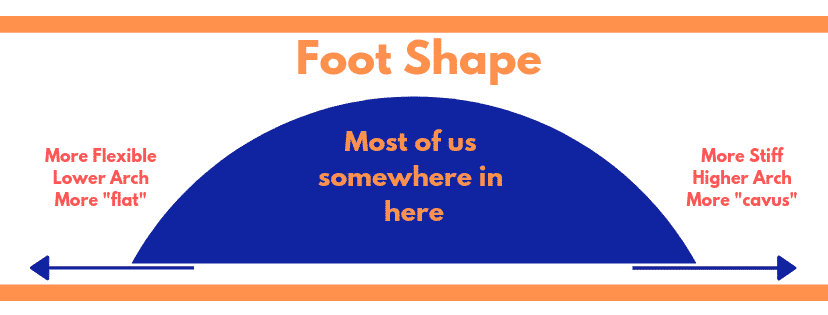
As in life, nothing is black or white whether things are better on one end of the scale or the other. Down the lower arched side, you have more movement available which leads to greater demands on muscles to control this increase in motion. This is why when tested people with “flat feet” have stronger and larger muscles than those with higher arches.
On the higher arched side of things - where the feet trend stiffer with less movement available - you get efficiency benefits as there doesn’t need to be as much strength in muscles as there is less movement to control. Sounds great but with less overall strength demands, these muscles don’t tolerate great changes in load as well and things can go wrong.
So, what this means for orthotics for our feet - whether they trend flatter or higher in the arch, or the more modern way of thinking, ‘more flexible’ or ‘more rigid’ - is that there is no one solution that fits all. The days of an arch support being shoved under your foot and told to slowly “break them in” are long gone.
We can now say with confidence that a Melbourne orthotics are going to help you achieve your goals by reducing the load on your… (whatever is overloaded and injured, or at risk of injury). Great result!
What are Orthotics Good For?
Orthotics are not just good but great for a myriad of lower limb conditions. As we discussed at the top, they alter the loads around our legs by pushing up on our feet at different times, under different loads and different areas of our feet.
This load altering is super important for our overuse injuries in our lower limbs. Ask anyone who has ever had a foot, ankle or leg injury, and you will hear how life draining the constant pain or disruption to daily life actually is. For most of us, the idea of walking, running or being on our feet LESS than usual, to reduce loading, is just impossible. We have our sporting careers to think of. We have our children and family to care for. We have that fun run coming up with a PB so close! We have to get to work and spend 10 hours on our feet every single day.
This is where an orthotic really comes into its own. Whatever area is overworked or overloaded can be given a helping hand with a gentle nudge from our orthotics in Melbourne.
A couple of examples are:
-
- Painful plantar fascia – previously known as ‘plantar fasciitis’ and now, ‘plantar fasciopathy’ – being overworked by too much tensile or pulling load. An orthotic can reduce this by limiting the lengthening of the plantar fascia.
- A painful plantar fascia being overworked by too much compression. This happens when the heel twists whilst the ball of the foot is on the ground. An orthotic can reduce this compression by reducing the twisting movement.
- Knee pain – whether it be PFJ (patello-femoral joint) pain or meniscal injuries, an orthotic can reduce the compression by changing the loading around the knee.
- Ankle pain or ankle sprains can be assisted with an orthotic by balancing the movement and load around the ankle, whether that be the inside or the outside ankle.
- Bone injuries to the feet, such as stress fractures, stress reactions or “hot spots” can be unloaded or ‘load-optimised’ by an orthotic.
Will Orthotic Insoles Help Reduce the Pain in My Feet and Legs?
At PridePlus, we use the latest technology and evidence-based practice to prescribe orthotic insoles, if required, to meet your goals. We work with you every step of the way to ensure you are comfortable and happy with your results.
We consider your lifestyle, your needs, and your biomechanics to create solutions for your pain.
There is a growing body of evidence that orthotic insoles when prescribed by podiatry experts in lower limb biomechanics, can reduce pain in the following conditions:
- Plantar Fasciitis or Heel Pain
- Stress Fractures in the lower extremities
- Knee pain
- Bunions
- Tendonitis
- Neuroma’s
- Shin Splints
- Sever’s Disease or children’s growth plate problems
- Arthritis
- Corns and calluses
- Lower back pain and Hip pain
Foot Orthotics help these conditions by altering loading on affected or at risk structures, and improving your body’s ability to be efficient at walking, running, specific sports and more.
If you suffer from pain in your feet, legs or lower back and want real results, call PridePlus now and speak to our staff about custom orthotic insoles.
What Kind of Custom Orthotics Will I Need?
The orthotic family tree can initially be broken down into Functional and Accommodative orthotics.
- An accommodative orthotic is designed to offload specific pressure lesions on the skin’s surface. For example a callous, corn or diabetic foot ulcer.
- A functional orthotic is designed to alter the loading patterns on tissues within the body to reduce pain, improve efficiency and reduce the risk of reinjury. For example, adjusting the load on the plantar fascia for heel pain, or reducing the compressive forces within joints with arthritis.
It makes no sense wasting money on a generic insert for shoes when every foot is different. But having custom orthotic insoles designed by a podiatrist for you personally can have an enormous impact on your quality of life, and relieve chronic foot pain and aching in your legs and lower back.
The style of foot orthotics prescribed will depend on your circumstance:
- What kind of correction your foot requires
- Does your job require you to stand for long periods
- Are the orthotics for sport and if so, which sport
- What kind of shoe the insert is for
How do I get orthotics?
The process for getting orthotics starts with your history and assessment. Our podiatrists in Melbourne will sit with you and assess everything from current capacity, current loading, joint axis and movement ranges, strength, footwear, and so much more.
From here, the assessment transitions towards the dynamic where walking, running and other tests are conducted relevant to your needs.
Finally, when the treatment plan is agreed upon and if orthotics are identified as a key part, the prescription process can begin.
First – a 3D scan of your feet is taken to capture every wrinkle, lump and bump on your feet which make us so unique.
Second – your podiatrist will advise on the materials and options relating to colour and comfort preferences.
Third – your foot scan and your orthotic prescription are sent to our partner orthotic laboratory in Melbourne where our colleagues (fellow podiatrists) either 3D print or mill your orthotic exactly as your prescription specifies.
A week later, your custom made orthotic is ready to go, you place it in your shoes, you learn a little about how it alters loading and commence the next phase of your treatment plan.
Are orthotics, alone, enough to help me?
Maybe. But it is unlikely this will be the best result you can achieve. If we think of orthotics as a way to optimise the load on our bodies tissues, then it’s easy to see how we can go from being sore to not being sore. The thing is though, our tissues are not static structures like a building or a car part, they are adaptable, pliable, trainable!
A thorough plan that your PridePlus Health podiatrist in Melbourne will develop with you, will take into account your goals, your history, your injury profile and so much more. If there is a need for orthotic therapy in your plan to achieve your goals, there is most likely a need for some tissue-based changes as well. To get these changes, your podiatrist will prescribe your personalised exercises to target the risk/at-risk areas and take them from being able to do 10 arbitrary units of work, to 1000 arbitrary units of work.
If you’re already working on your tissues but still in pain or suffering from regular injuries, then this is where an orthotic can be a really useful clinical tool to take the demand on said tissue down from say 50 arbitrary units of work to 25 arbitrary units of work. You can still work on the capacity building but now, instead, from a safer and less painful or at risk base.
Should you run with orthotics?
If you have been prescribed an orthotic for running and your injury profile, load optimisation and more are taken into account – absolutely!
Now, if you have been prescribed an orthotic for cycling and your podiatrist has said to only use this for cycling in your cleats – absolutely not!
A really common reason for clients to present to a podiatrist is they have suffered a running-related injury, which often stems from a training error. It’s only human to go out and start running, then run more, and more, and more. Not many of us who enjoy running ever engage the services of a running coach or spend the time investigating the loading principles of training. Honestly, when most of us run, we grab our shoes, step out our front gate, turn right (it’s always right!) and run. We do the same run over and over again.
Orthotics are really useful for runners who have made a simple training error and are now too injured to optimise their loading and continue to run. When prescribed by expert podiatrists, like the PridePlus Health team in Melbourne, there will almost always be aspects of capacity building in the management plan, as well as training advice and/or a referral to an appropriate running coach or EP (Exercise Physiologist).
Now, one of the key considerations regarding running, footwear and orthotics is weight. The simple maths is that the heavier the things we carry, the harder we have to work. This is a great segue into the materials that orthotics are made out of.
What are Orthotics Made Out of?
Historically, orthotics were made of wood, cork and steel. Not anymore.
Welcome to the future where the PridePlus Health podiatry team are one of the first in Melbourne to pioneer the use of ultra-light and plant-based 3D-printed materials.
The most commonly used material today by the expert podiatrists at PridePlus Health is a 3D-printed, vegan and plant-based protein. These Melbourne orthotics are the thinnest and lightest we have ever created; allowing them to fit into more shoe styles as well as reduce the weight inside a shoe to improve running and walking economy.
Printed and ready to go inside your shoes in just a week from scanning, our matte black 3D-printed orthotics can be covered with a variety of other materials depending on your injury profile, comfort preferences and even colour choices.
Another material we often use for our orthotics is carbon fibre. Carbon fibre has significant properties relating to stiffness but remains lightweight, which is incredibly useful in applications like cycling.
Until recently, a material known as milled polypropylene was the go-to material for orthotics which, for around 8 years, was the industry leader regarding its stiffness, comfort and weight. This material has been superseded by the 3D-printed orthotics and is no longer used by the PridePlus Health team. This decision was not made lightly as there are hundreds of happy clients running, walking and getting around with their polypropylene orthotics. However, we can now get a better result for our clients with the 3D-printed device, as well as reduce the carbon footprint required to make the device by 95%!
Prior to milled polypropylene being used for orthotics, heat-moulded polypropylene was the go-to. This required very large amounts of plastic that you could get in really great shape for a client’s foot but took up significant real estate inside a shoe.
The final option for orthotics that still gets used sparingly is an EVA foam. Foams have a much shorter lifespan compared with the other materials – think 12 months or under vs. greater than 10 years, in most cases. Foams are bulky, take up a lot of space and not particularly good for the environment. But, with whom they can be used well are with people suffering from a significant foot deformity and diabetic foot disease. A foam device inside a custom made shoe can remove the peak loading and shear stress on lesions to allow healing, prevent re-ulceration and reduce amputation risk. For this purpose, foams still have a place in an expert podiatrist’s arsenal.
Do I need orthotics?
This is an impossible question to answer without taking into consideration someone’s history, their goals and their life!
It can certainly be said that many of us could benefit from orthotics, but that doesn’t mean that everyone gets orthotics.
If you’re sore, injured and/or have recurrent injuries in your lower limbs, then there is a really good chance an orthotic can be a useful tool for you to utilise to help. If you are a driven individual who can modify your loading with changes to footwear, your activities and your exercise regimen then using an orthotic might not be on your radar.
That’s the beauty of having a thorough assessment and goal setting consultation with your podiatrist. If using an orthotic is not something you want to do, your podiatrist will outline the other aspects to manage to still get a great outcome.
An example of this in action might look like this. Let’s say your goals are really short-term focussed, like an upcoming event, maybe ‘Run Melbourne’. You might need an orthotic to safely complete this great run but in the long-term, your focus shifts to a tighter structured training plan with strength and other changes. In this instance you might ‘need’ an orthotic for 6 to 12 months for your long runs and higher demand activities; but not for your interval training, strength training or even for your long runs, and races after you have trained up. The training-up component of the management plan would be exercise-based with conditioning, strength and load optimisation maximised with guidance from your podiatrist and others in your health and fitness team.
Will I have to wear orthotics forever?
Definitely not, particularly if you don’t want to! Orthotics are prescribed for you, your injury profile and your goals. If your goal is to wear orthotics forever then this can be taken into consideration by your podiatrist. In all honesty, we have yet to have this goal ever brought to us at PridePlus Health!
In reality, your ongoing use of orthotics will really be dictated by what you’re doing with your life. Certainly, as we age, our bodies’ tolerance or capacity to tolerate loading decreases over time. We can reduce this via training and load optimisation but it still happens.
An old myth related to orthotics is that they “change my feet”, and that you cannot then walk or run without them. Orthotics can do a lot but remember, they are ultimately a loading tool. When used well, they optimise load; when used incorrectly, they can exacerbate load. You can also alter load by changing strength, footwear, cadence, volume and more. Your decision and long-term needs will be considered and outlined in your overall management plan with your podiatrist.
How Long do Orthotics Last?
This differs from person-to-person but here is a rough guide:
- 3D Printed Orthotic
- Shell life 10+ years
- Top cover life 2 – 5 years (a top cover is a simple replacement liner which influences comfort and cosmesis of an orthotic)
- Carbon Fibre Orthotic
- Shell life 12+ years
- Top cover life 2 – 5 years (a top cover is a simple replacement liner which influences comfort and cosmesis of an orthotic)
- Milled Polypropylene Orthotic
- Shell life 8+ years
- Topco ver life 2 – 5 years (a top cover is a simple replacement liner which influences comfort and cosmesis of an orthotic)
- EVA Foam Orthotic
- Shell life 1 – 2 years
- The top cover of an EVA device is usually built into the device
What Shoes Can be Used with Orthotics?
Lots and lots of different style shoes can be used with orthotics; and due to recent advances in orthotic manufacturing and materials, this list has grown significantly.
As modern orthotics are lighter and thinner than previously, they can fit in shoes much easier than in the past.
General rules are that shoes need to have enough room to fit your foot in to start with – not these super tight shoes which some of us are guilty of buying too small. A removable liner inside the shoe makes things much easier but is not always necessary. A back on the shoe, known as a ‘heel counter’, is also ideal so that your orthotics don’t slide out under your feet. Some sandals without a heel counter can be worn as they have a high midsole ridge which can accommodate an orthotic.
An old myth relating to running shoes and orthotics was that orthotics had to be placed inside neutral classed shoes. As with most myths and stereotypes, there’s just enough truth there for it to be believable. Different running shoes in different categories will influence your feet and your orthotics differently. Your expert podiatrist will take this into consideration when planning and prescribing your orthotics. It might lead you to wear your orthotics inside a neutral class of shoe or it might not.
Are Custom Orthotics Covered by Insurance?
Yes. Orthotics are covered by private health insurance when prescribed by an expert podiatrist. Insurers recognise quality health care and in Melbourne, you can get rebates for your orthotics depending on your level of cover with your insurer.
As podiatry is an allied health profession, regulated by AHPRA (Australian Health Practitioner Regulation Agency) to have your private health insurance cover the cost or partial cost of your orthotics, you will need to check with your insurer about your policy specifics. Usually, podiatry comes under extras in most insurance policies.
Are Custom Orthotics Covered by Medicare?
Unfortunately, no. Medicare was devised very much as a medical-only payment system many years ago. Despite a small portion of funding being allowed for podiatry consultations only and only for those with a chronic medical condition when referred by their GP, it has not kept pace with the health system, the increasing recognition of allied health such as podiatry, physiotherapy and more, and the important role in which we play keeping Australia healthy.
What are the Best Orthotics?
The best orthotics are your Melbourne orthotics, prescribed for you, your feet, your life, your goals and your activities.
At PridePlus Health, we are confident in our orthotic prescription, assessment and management planning that you will be more than satisfied with your orthotics.
Frequently Asked Questions About Custom Orthotics
Need some more information? Here are our most frequently asked questions about custom orthotics.
